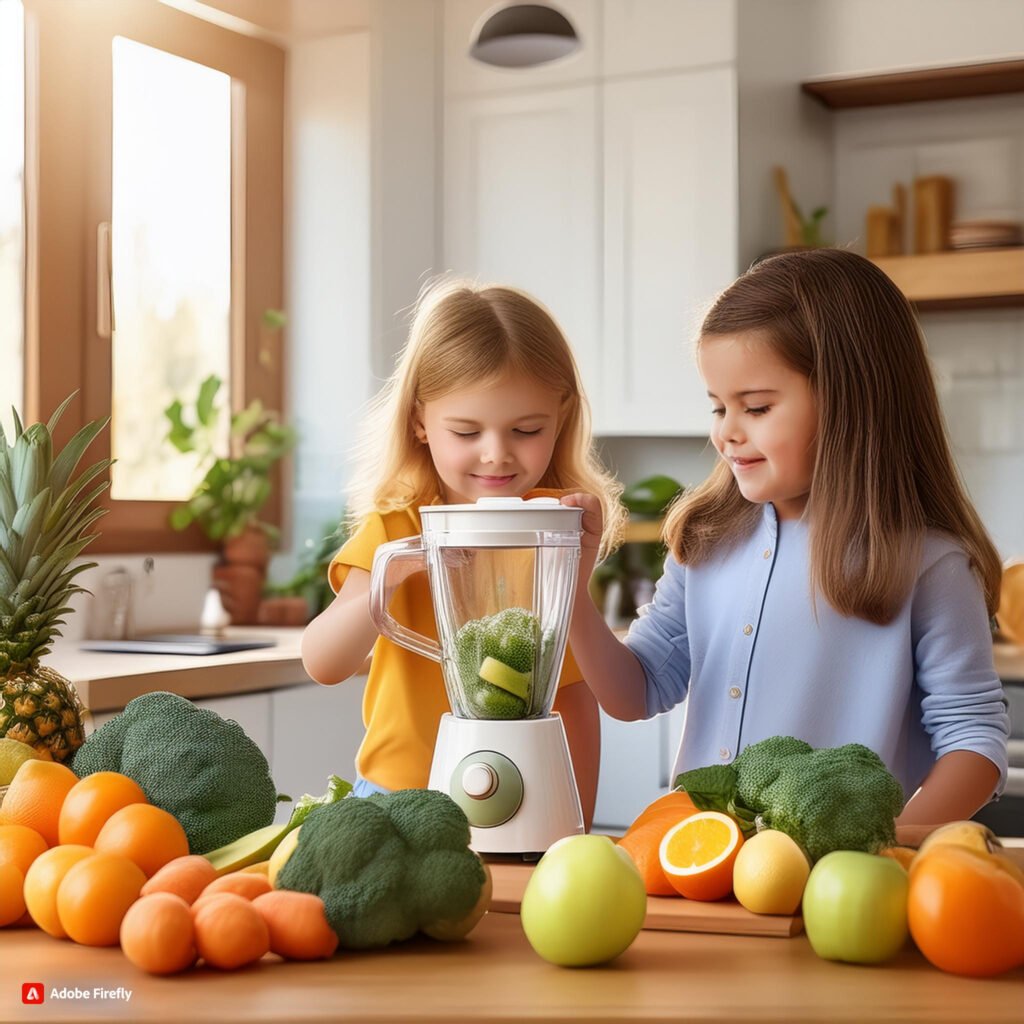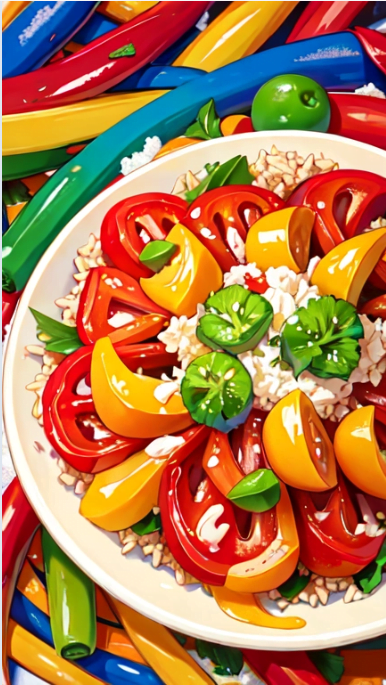Transforming mealtime battles into veggie adventures can be a game-changer for families dealing with picky eaters. Encouraging children to enjoy vegetables doesn’t have to be a struggle. With a bit of creativity and patience, you can turn vegetables into a fun and appealing part of your child’s diet. This blog post offers creative tips and strategies to make veggies irresistible to even the pickiest eaters.
Introduction
Getting children to eat their vegetables can sometimes feel like a daunting task. However, turning this challenge into an opportunity for creativity can make mealtimes more enjoyable for everyone. By making vegetables fun and engaging, you can foster healthier eating habits and transform veggie time from a battle into a beloved part of the day.
Get Creative with Shapes

One of the simplest ways to make vegetables more appealing is to get creative with their shapes. Children are often drawn to visually interesting foods, so using cookie cutters or other tools to shape vegetables into fun forms can spark their interest.
How to Do It:
- Use Cookie Cutters: Invest in a set of cookie cutters in various shapes and sizes. Carrots, cucumbers, and bell peppers are great options for cutting into stars, hearts, and animals.
- Vegetable Sculpting: For a more hands-on approach, try sculpting vegetables into fun shapes using a knife or peeler. Just be sure to supervise young children during this process.
Benefits:
- Engagement: Fun shapes can make vegetables more enticing, encouraging children to try them out of curiosity.
- Creativity: This approach allows children to engage with their food in a playful way, making mealtimes more enjoyable.
Play with Colors
A colorful plate is not only visually appealing but also indicates a variety of nutrients. Creating vibrant veggie platters can make eating vegetables a more enjoyable experience.
How to Do It:
- Rainbow Platter: Arrange a variety of vegetables in a rainbow pattern. Use red bell peppers, orange carrots, yellow corn, green broccoli, and purple cabbage to create a visually stunning plate.
- Dip Stations: Create a colorful array of vegetables and pair them with different dips, making the experience interactive and fun.
Benefits:
- Nutritional Value: A colorful plate often represents a range of vitamins and minerals, promoting a balanced diet.
- Visual Appeal: Bright colors can make vegetables more attractive and enticing to children.
Make Veggie Art

Turning vegetables into art projects can be a fun and educational way to encourage kids to eat their greens. Letting children use vegetables as stamps or paintbrushes allows them to play with their food in a creative manner.
How to Do It:
- Veggie Stamps: Cut vegetables like potatoes or bell peppers in half and use them as stamps to create patterns on paper or even on their food.
- Veggie Paintbrushes: Dip the ends of celery stalks or other vegetables in natural food dyes or sauces and let children “paint” their plates.
Benefits:
- Creativity: Engaging in veggie art helps children view vegetables as more than just food, enhancing their interest in trying them.
- Fine Motor Skills: Activities like veggie stamping can help develop fine motor skills and hand-eye coordination.
Offer Dips and Sauces

Adding tasty dips and sauces to vegetables can make them more appealing and enjoyable. Dips provide an opportunity for children to explore different flavors and textures.
How to Do It:
- Healthy Dips: Serve veggies with hummus, yogurt-based ranch, or homemade salsa. These options add flavor and can make veggies more palatable.
- DIY Sauce Bar: Set up a “sauce bar” with various dips and sauces for children to choose from, making the experience interactive.
Benefits:
- Flavor Enhancement: Dips can mask the taste of vegetables that children might find unappealing, making them more enjoyable.
- Interactive Eating: Allowing children to choose their own dips empowers them and makes eating veggies more fun.
Create Veggie Faces
Turning vegetables into playful faces or characters can make mealtime more enjoyable and less intimidating for picky eaters.
How to Do It:
- Veggie Faces: Arrange vegetables on a plate to create silly faces or animals. Use cherry tomatoes for eyes, sliced bell peppers for mouths, and cucumber slices for noses.
- Theme Nights: Create themed veggie faces based on holidays or favorite characters to make mealtime special.
Benefits:
- Playfulness: Encouraging children to create and interact with their food can make veggies more appealing.
- Encouragement: Veggie faces can make vegetables less intimidating and more fun, encouraging children to try new foods.
Get Them Involved

Children are more likely to eat what they’ve helped prepare. Involving kids in the kitchen can increase their interest in vegetables and give them a sense of ownership over their meals.
How to Do It:
- Veggie Prep: Let children wash, peel, or chop vegetables (with supervision). This hands-on involvement can increase their willingness to eat what they’ve helped prepare.
- Cooking Together: Engage children in the cooking process by letting them help mix, stir, or assemble dishes.
Benefits:
- Involvement: When children participate in food preparation, they are more likely to be excited about eating the final product.
- Skill Development: Cooking together helps children develop important life skills and fosters a positive attitude towards food.
Plant a Veggie Garden
Growing vegetables can create a sense of connection and responsibility. When children see where their food comes from, they may be more inclined to eat it.
How to Do It:
- Start Small: Begin with easy-to-grow vegetables like cherry tomatoes, carrots, or lettuce. Involve children in planting, watering, and harvesting.
- Educational Experience: Use the gardening experience as an opportunity to teach children about the different stages of plant growth and the importance of healthy eating.
Benefits:
- Connection: Growing their own vegetables helps children understand where food comes from and can make them more excited to eat it.
- Responsibility: Caring for a garden teaches children about responsibility and the value of hard work.
Try Veggie-Based Snacks

Offering veggie-based snacks can be a great way to incorporate more vegetables into your child’s diet in a fun and appealing way.
How to Do It:
- Veggie Chips: Make your own veggie chips using a dehydrator or oven. Kale, sweet potatoes, and beets are excellent options.
- Veggie Muffins: Incorporate vegetables into baked goods like muffins or bread. Zucchini, carrots, and spinach work well in these recipes.
- Roasted Chickpeas: Season and roast chickpeas for a crunchy, veggie-packed snack.
Benefits:
- Healthy Snacking: Veggie-based snacks provide a nutritious alternative to traditional snacks and help increase vegetable intake.
- Variety: Introducing different forms of vegetables can keep snacks interesting and enjoyable for children.
Offer Choices
Giving children the power to choose can make them more invested in their meals. Allowing them to select their own vegetables can increase their willingness to eat them.
How to Do It:
- Veggie Bar: Set up a “veggie bar” with a variety of vegetables and let children choose their favorites.
- Meal Planning: Involve children in meal planning by asking them which vegetables they would like to include in upcoming meals.
Benefits:
- Empowerment: Allowing children to make choices about their food gives them a sense of control and can increase their willingness to try new things.
- Involvement: Being part of the decision-making process makes children more likely to enjoy and eat the vegetables they selected.
Be Patient and Persistent

Encouraging children to eat vegetables can be a long-term process. It’s important to remain patient and persistent, even if progress is slow.
How to Do It:
- Regular Exposure: Continuously offer vegetables in different ways, even if your child doesn’t immediately take to them.
- Positive Reinforcement: Praise and encourage children when they try new vegetables, even if they only take a small bite.
Benefits:
- Consistency: Regular exposure to vegetables can help children become more accustomed to their flavors and textures over time.
- Encouragement: Positive reinforcement can boost children’s confidence and willingness to try new foods.
Celebrate Small Victories
Every step towards healthier eating is worth celebrating. Acknowledge and praise your child’s efforts to try new vegetables, no matter how small.
How to Do It:
- Praise: Offer genuine praise when your child tries a new vegetable or eats a larger portion than usual.
- Rewards: Consider using a reward system where children earn small rewards for trying new vegetables or eating their veggies consistently.
Benefits:
- Motivation: Celebrating small victories reinforces positive behavior and encourages children to continue trying new foods.
- Confidence: Recognizing achievements helps build children’s confidence in their ability to try and enjoy new vegetables.
Conclusion
Making vegetables fun and engaging can transform mealtime challenges into enjoyable experiences. By getting creative with shapes, colors, and presentation, you can make veggies more appealing to picky eaters. Involving children in the preparation and planting of vegetables, offering tasty dips and snacks, and providing choices can also enhance their interest in eating vegetables. Remember, patience and persistence are key, and celebrating small victories along the way can make a big difference.
With these creative tips, you can turn vegetable time into an adventure that your children look forward to. Embrace the process, and watch as your picky eaters become veggie enthusiasts. Happy cooking!
Feel free to experiment with these ideas and adapt them to suit your family’s preferences. With a little creativity and encouragement, you can make veggies a fun and





